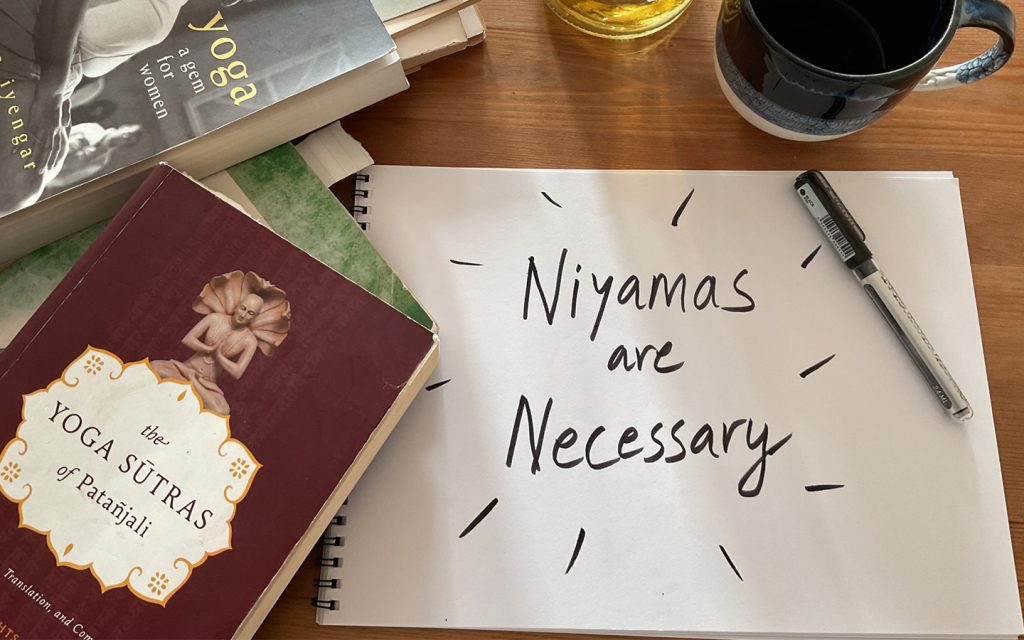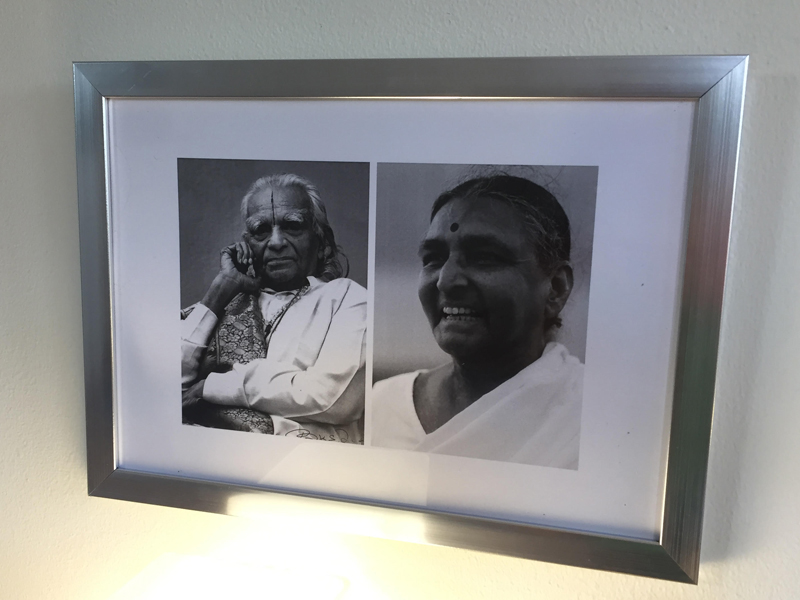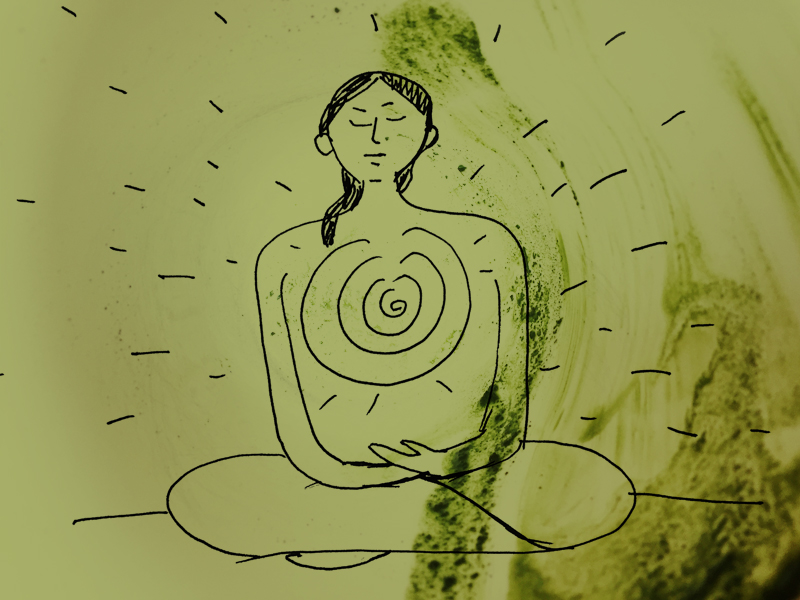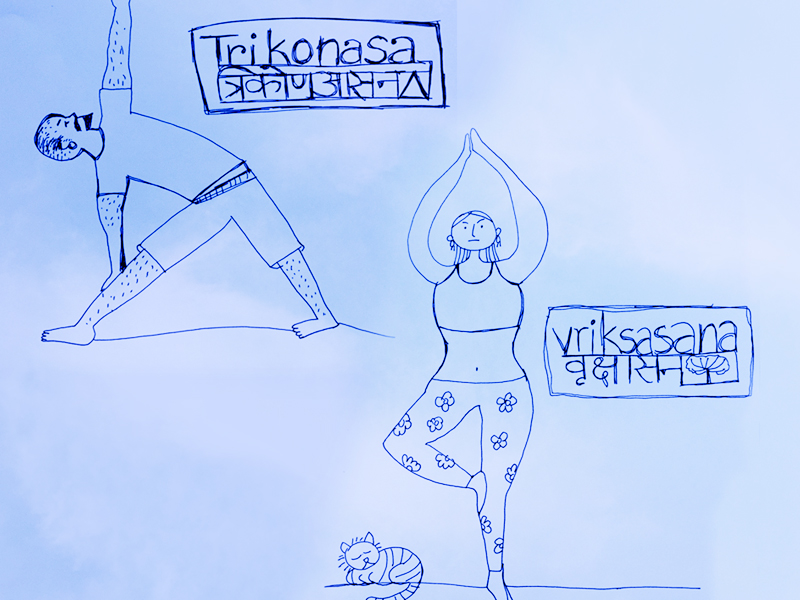The Niyamas are the second of the eight limbs of Astanga Yoga.
While Yama deal with how we relate to the world around us, Niyamas are focused on our own personal rules of action or self disciplines. A yogi adheres to disciplined conduct in terms of body, speech and mind so as to purify themselves. It is disciplined actions that lead to desired outcomes. We need to develop wholesome personal habits or Niyamas to progress in the path of Yoga.
What are the Niyamas?
Niyamas are listed by Patanjali in the Yoga Sutras as follows:
śauca saṁtoṣa tapaḥ svādhyāy-eśvarapraṇidhānāni niyamāḥ
Cleanliness, contentment, austerity, self-study and surrender of the personal self to the supreme Self or God are the niyamas.
Chapter 2, Sadhana Pada, Sutra II.32
śauca (Cleanliness)
Cleanliness can be categorised into two kinds, external and internal. External pertains to our surroundings and body. Keeping the body clean, eating a healthy diet which gives energy to the body yet keeps the mind calm and alert. Staying away from alcohol or any kind of addictive stimulants which are harmful and toxic to the body. In addition cleaning up our rooms or living spaces. Creating an personal space which is tidy, clean, aesthetically pleasing, organised and clutter-free helps in encouraging a clearer mind state. Internal cleanliness is working on purifying the mind of negative mind states like jealousy, pride, vanity, hatred and greed. Moving away from habits of overstimulation or over indulgence in our day. What we eat in terms of food affects the cleanliness of our body and what we consume with our mind in terms of entertainment and interactions affect the saucha of our mind.
saṁtoṣa (Contentment)
Cultivating a sense of contentment. This too we can look through the lens of both material and emotional. To be content with what we have in terms of worldly possessions. If we have the basic comforts of food, shelter, clothing, medicine along with a few comforts, that is plenty. If we are always looking out and comparing ourselves with what our friends, neighbours or some social celebrity or influencer has we will be perpetually in a state of discontent. Such a mind is agitated and cannot focus or concentrate. Even if there is some lack in our life, instead of obsessing on what is missing, we can simply take a stance of gratitude and remind ourselves..it is enough. We learn to discipline our thoughts and desires to move into a sense of contentment and ease.
tapaḥ austerity
The next niyama is about developing physical and mental resilience. In a culture addicted to dopamine hits of instant gratification and constant comfort we are increasingly becoming weaker in dealing with adversity. This is doing ourselves a disservice. We get easily agitated with small discomforts unable to endure or persevere. Ancient yogis did exactly the opposite. They experimented with the boundaries of what the human body could endure in terms of hunger, thirst, heat and cold. Often by setting a determination to sit with and through these physical discomforts thereby developing mental resilience. Learning to keeping the mind calm despite physical discomforts is very useful practice in dealing with the inevitable ups and downs of life. So here’s to practicing a bit of austerity in our lives. Occasionally taking up the habit of fasting from food, harsh speech, idle chatter maybe?
svādhyāya study
Reading books on Yoga, biographical accounts of great Yogis, and books on the philosophy of yoga, deepens our understanding of the subject. Spending time and inclining the mind towards inspiring words of wisdom starts to have an effect on our personality, habits, likes, dislikes, and views. As we study, we understand more about the depth of wisdom and support this ancient body of practise has to offer. It gives us more clarity on how and why we practise. It is great that Yoga is common knowledge but there is much more to the subject than simply striking a pose…it is making a commitment to use all the limbs of Yoga to elevate our lives.
Ishvara pranidhana surrender
To surrender our hearts with devotion to God/Higher intelligence. This might be something difficult for the modern skeptical mind. However I am sure we all know and feel that our individual self has limitations and for sure the vast world around us presents us a sense of awe and enigma.
I will quote from Edwin Bryant’s book on Yoga sutras
“Vacaspati Mishra considers devotion to Ishvara to be the most important of all the yamas and niyamas. Cultivating the yamas and niyamas produces beneficial results, but is only from Ishvara pranidhana that the ultimate goal of yoga namely samadhi is gained.
It’s important to acknowledge this as we practice yoga.
Nimayas are Necessary to the Practice of Yoga
A well rounded practise of yoga includes the yamas and niyamas. Even if you entered the path of yoga through the doorway of asana practice, it is beneficial to know that there is more. And ‘that more’ is very helpful if you want to sustain your practise over a long period of time. Anything that is practised diligently, consistently will bear fruits…however to do so we have to develop the personal habits of Niyamas. Clean up our body and mind, have a sense of contentment and humility, persevere through physical and mental challenges, learn and study and finally surrender all our actions to the stream of life. If you have done the work surely it will lead you to someplace good. Trust the process.
References:
The Yoga Sutras of Patanjali by Edwin Bryant
Yoga a Gem for women by Geeta Iyengar





